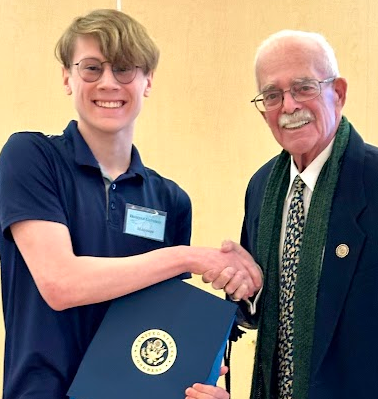The days of playing video games or doing homework for another class during school are over as Lightspeed allows teachers to monitor students’ computer screens. New this year, teachers can use Lightspeed to block sites, close tabs, send students messages and view computer screens.
It’s intended to help students stay focused and stop cheating on tests, but it can cause privacy concerns. When using Lightspeed, teachers are able to see tabs students have open, emails and college applications which may contain personal information. Teachers are even able to see students’ screens after class if they forget to end the viewing session.
“I was in [Warhawk time] once, and I finished all my work, so I turned on a movie to pass the time. A teacher who I wasn’t in the Warhawk time of, it was a teacher from a completely different period, closed out that tab.” Griffin Wilson (’28) said.
While having his movie closed wasn’t much of a problem, Wilson worries about the implications of his experience.
“I just thought it was odd that I was pretty much being stalked by a teacher who I wasn’t even in class with at the time,” Wilson said.
While Lightspeeds’ abilities to control student’s devices beyond the classroom can be questioned, some teachers depend on it for their classes. Spanish teacher, Mary Gonzalez, only uses it for one period as students tend to play games instead of doing their work. She finds it helps her, especially when they’re unfocused.
“They were all doing something else. Not only the usual suspects, but everybody else, so I blocked the internet and everybody had to pay attention to what I was saying,” Gonzalez said.
It helped her in that situation, but she worries that constantly monitoring students’ computers hinders students’ development of personal accountability and taking ownership over their education. After high school, student’s college professors and bosses will expect them to complete work on their own. To ensure students still develop these skills, Gonzalez only uses Lightspeed occasionally.
“I only use it with this group when they’re out of hand. I believe that everyone should be responsible for their own learning journey. I cannot worry more for them than what they worry for themselves,” Gonzalez said.
Lightspeed also pushes students to be creative, though it may not be how it’s intended to. Some students have found ways around site blocks and screen monitoring features. TZ Zhang (’26) argues that Lightspeed can never catch up to students working around it.
“They are numerous in their strategies. [Lightspeed] cannot proactively seek out such failures. It will always be seeking to catch up with such exploits,” Zhang said.
While some students use hacks to avoid supervision, many don’t so Lightspeed can still monitor many students’ computers. It may be useful for teachers who need to keep students on task or prevent cheating on tests, but if they don’t add time limits on how long websites should be blocked, students can have problems completing assignments at home. Laila Weedman (’26) experienced this first hand.
“When I tried to use my computer on Sunday to do some homework I realized all my tabs were still blocked so I restarted my computer hoping they would unblock but they all just stayed blocked,” Weedman said.
Stopping students from doing their work, creating privacy issues and preventing students from relaxing when they finish assignments isn’t what Lightspeed is intended to do. It simply aims to keep students focused during school, but Keira Mendis (’27) is concerned by its flaws.
“Deep down it bothers me to know that our educators have the right to see personal emails, documents we have not shared with them or other private information that could be viewed by an educator at any given time,” Mendis said.



